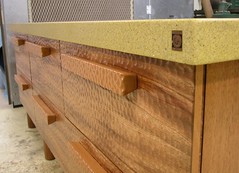
Synergy. That is the best way to describe this apartment. A real ground up remodel of this apartment by Lapis Design Partners created something much greater than the sum of the parts. Whitewashed bamboo, a finish sample I stumbled upon during experimentation, provided an awesome face to this complete fit out. 3Form panels were used in many of the doors, while flooring, wall and counter materials all complimented one another. A selection of state of the art hardware made the many functions designed by John Black work effortlessly. Take a look at the fold down worksurface where the client paints for example. Other less visible features are a full sized pocketing door for the laundry and a fold up bed platform that accesses a huge storage area inside. The lighting in this apartment really showed off the work and assured atmosphere at any time of the day. I don’t mind saying that the fit and finish we achieved on this job was awesome.
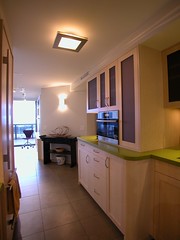
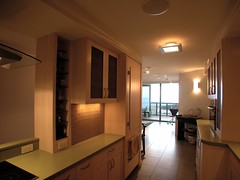
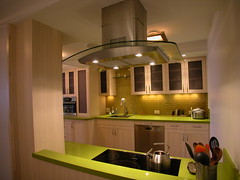
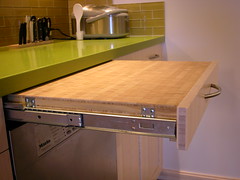

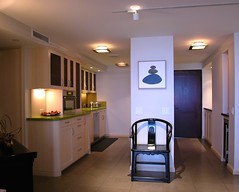
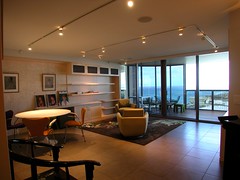
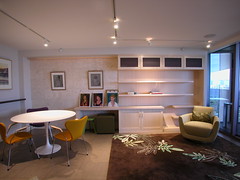
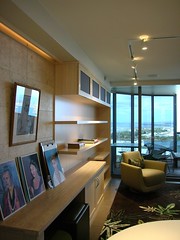
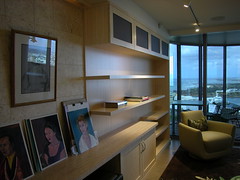
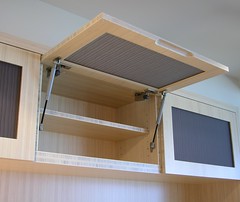
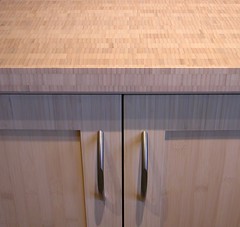

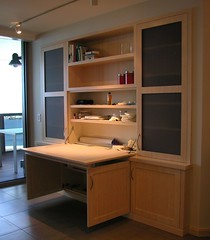
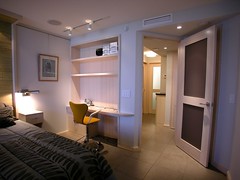

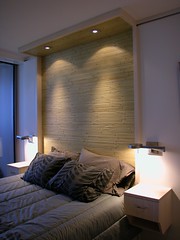
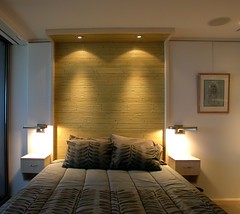
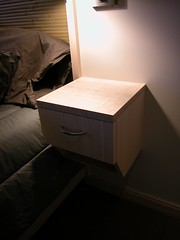
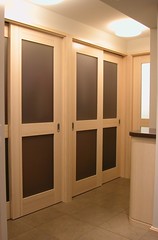
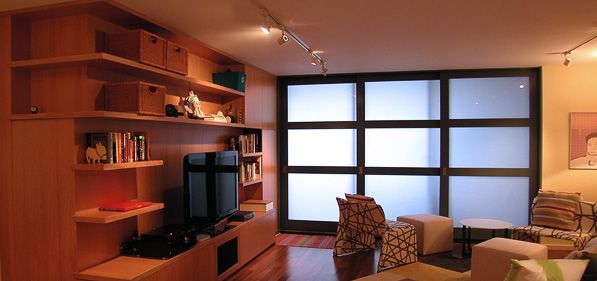
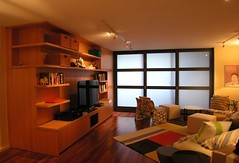

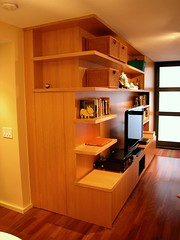
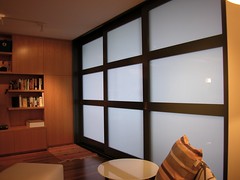
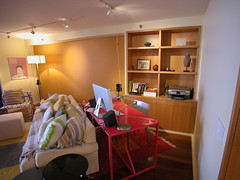
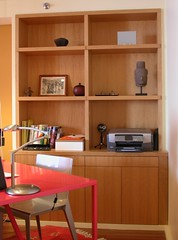
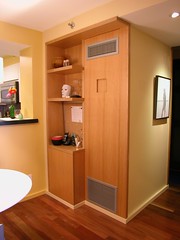
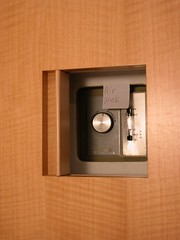
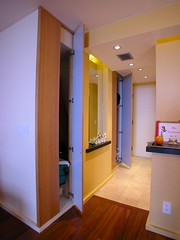
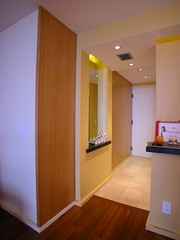
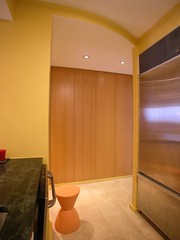
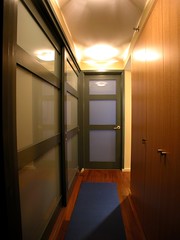
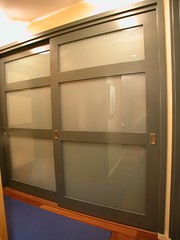
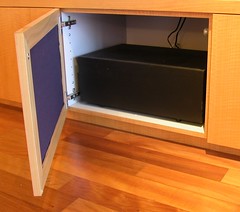

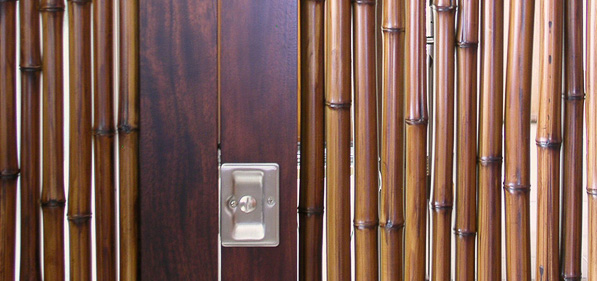


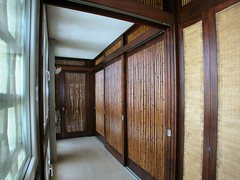






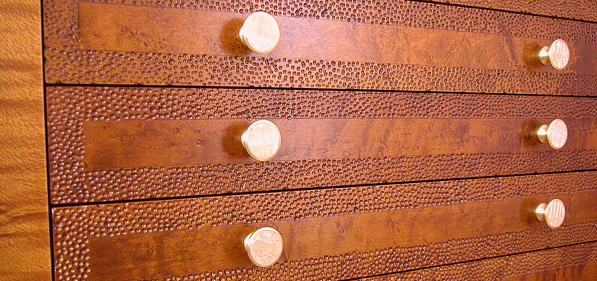
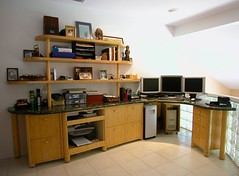





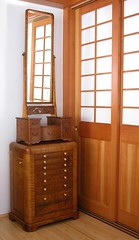


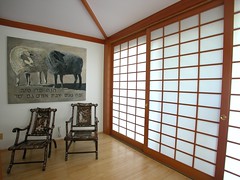





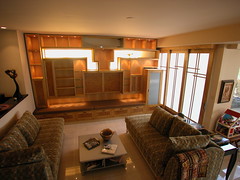


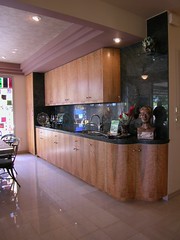



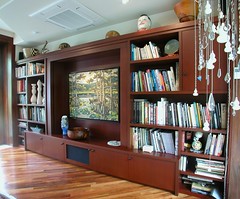




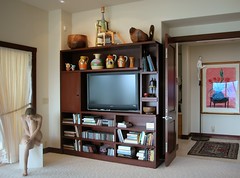

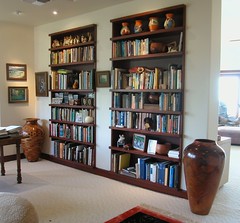


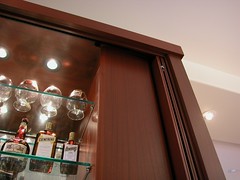


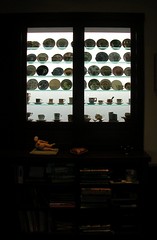
 A knot is a particular type of imperfection in a piece of wood; it will affect the technical properties of the wood, usually for the worse, but may be exploited for artistic effect. In a longitudinally-sawn plank, a knot will appear as a roughly circular “solid” (usually darker) piece of wood around which the grain of the rest of the wood “flows” (parts and rejoins). Within a knot, the direction of the wood (grain direction) is up to 90 degrees different from the grain direction of the regular wood.
A knot is a particular type of imperfection in a piece of wood; it will affect the technical properties of the wood, usually for the worse, but may be exploited for artistic effect. In a longitudinally-sawn plank, a knot will appear as a roughly circular “solid” (usually darker) piece of wood around which the grain of the rest of the wood “flows” (parts and rejoins). Within a knot, the direction of the wood (grain direction) is up to 90 degrees different from the grain direction of the regular wood. Where there are clear seasons, growth can occur in a discrete annual or seasonal pattern, leading to growth rings; these can usually be most clearly seen on the end of a log, but are also visible on the other surfaces. If these seasons are annual these growth rings are referred to as annual rings. Where there is no seasonal difference growth rings are likely to be indistinct or absent.
Where there are clear seasons, growth can occur in a discrete annual or seasonal pattern, leading to growth rings; these can usually be most clearly seen on the end of a log, but are also visible on the other surfaces. If these seasons are annual these growth rings are referred to as annual rings. Where there is no seasonal difference growth rings are likely to be indistinct or absent. Wood is an organic material, a natural composite of cellulose fibers (which are strong in tension) embedded in a matrix of lignin which resists compression. In the strict sense wood is produced as secondary xylem in the stems of trees (and other woody plants). In a living tree it transfers water and nutrients to the leaves and other growing tissues, and has a support function, enabling woody plants to reach large sizes or to stand up for themselves. Wood may also refer to other plant materials with comparable properties, and to material engineered from wood, or wood chips or fiber.
Wood is an organic material, a natural composite of cellulose fibers (which are strong in tension) embedded in a matrix of lignin which resists compression. In the strict sense wood is produced as secondary xylem in the stems of trees (and other woody plants). In a living tree it transfers water and nutrients to the leaves and other growing tissues, and has a support function, enabling woody plants to reach large sizes or to stand up for themselves. Wood may also refer to other plant materials with comparable properties, and to material engineered from wood, or wood chips or fiber.










